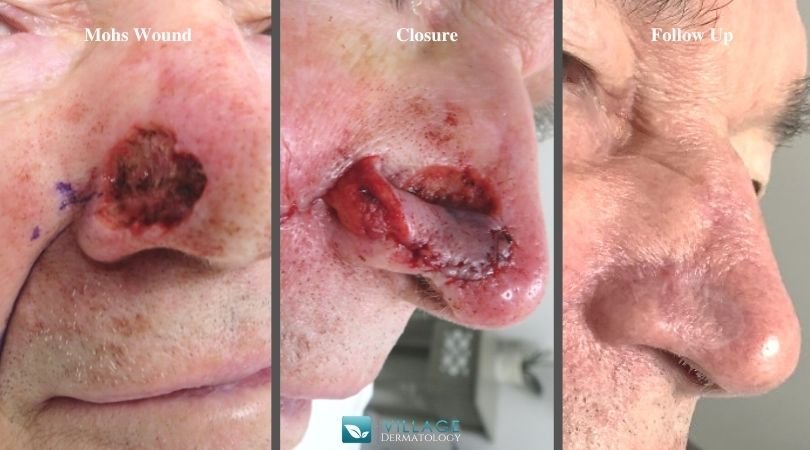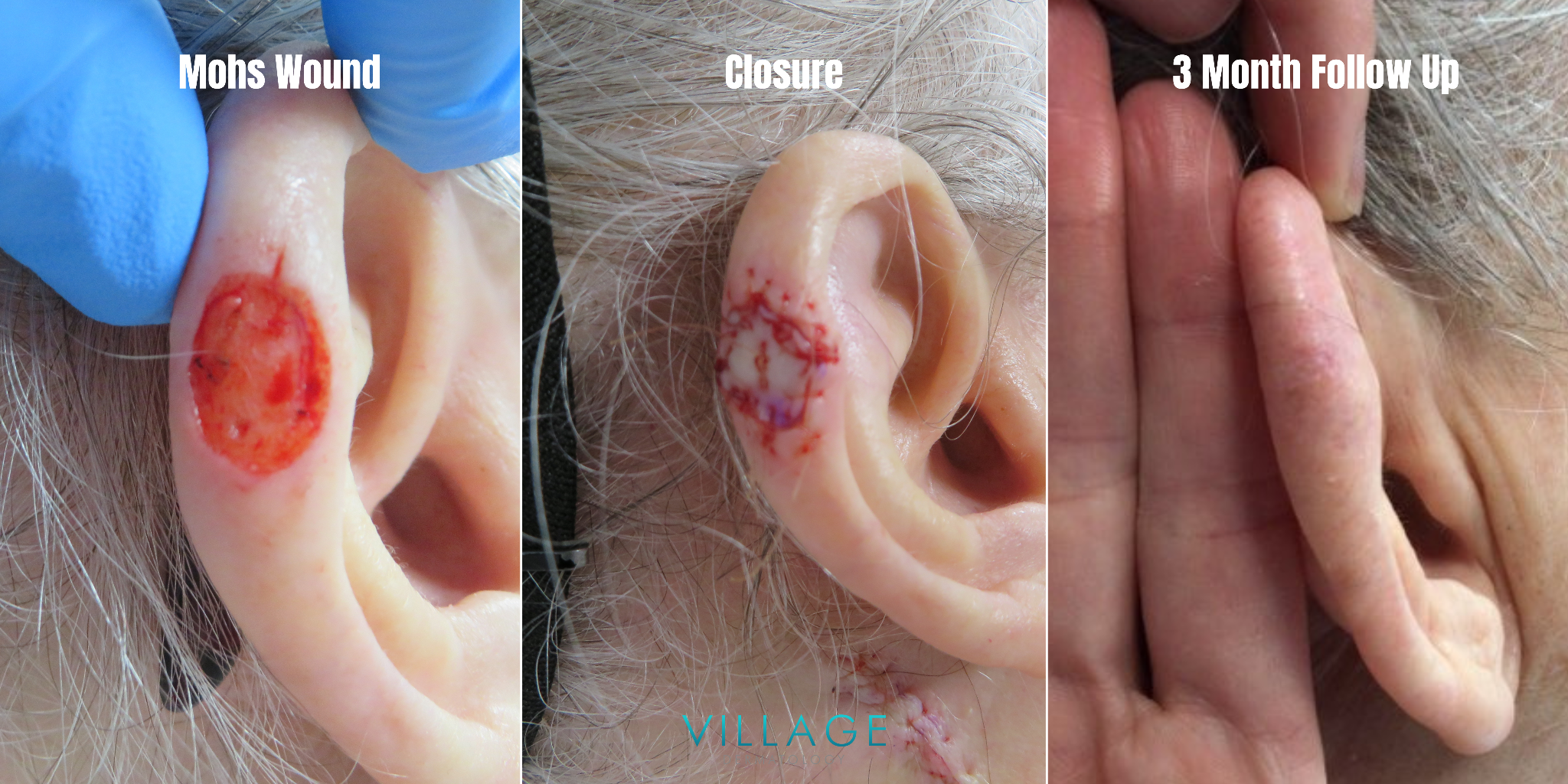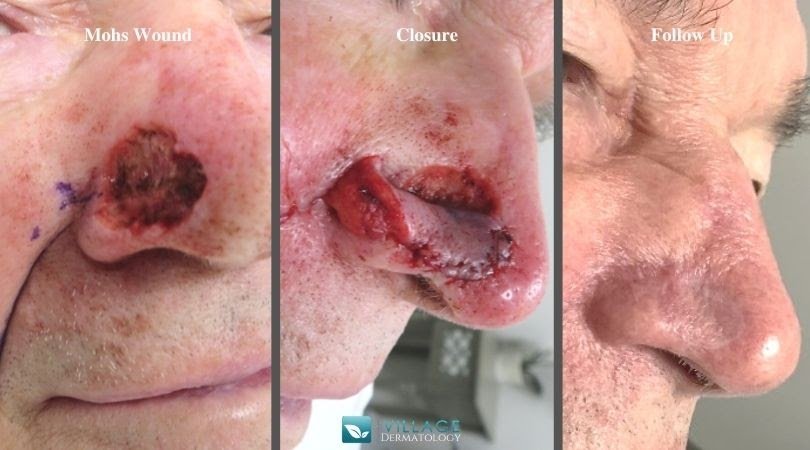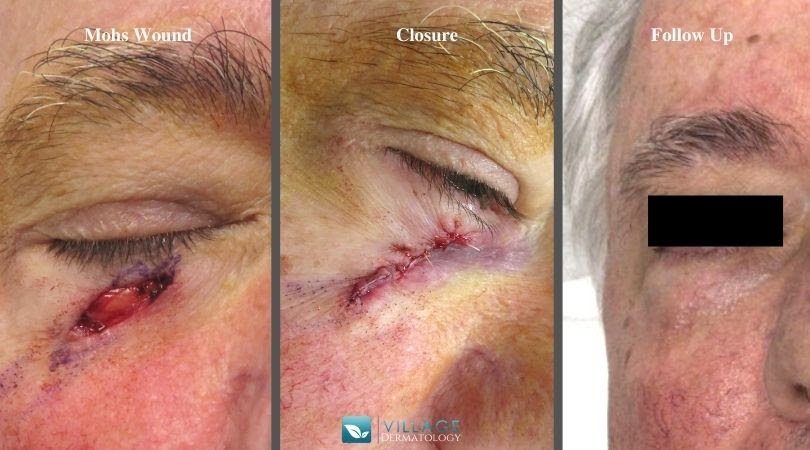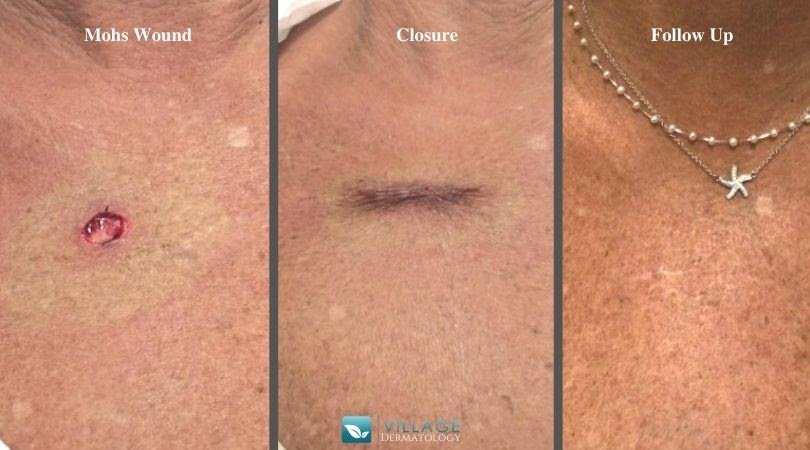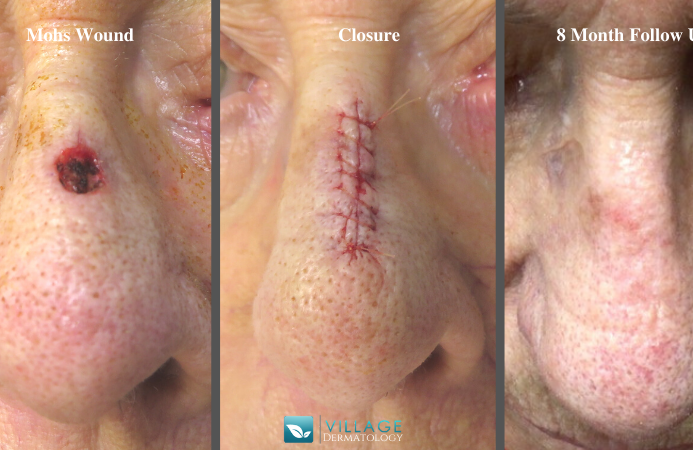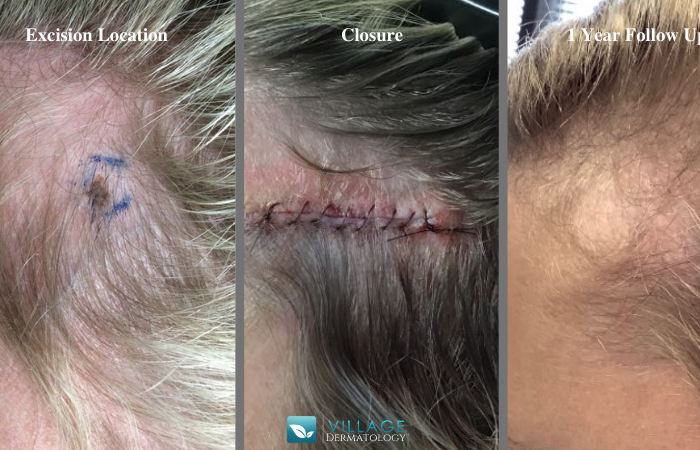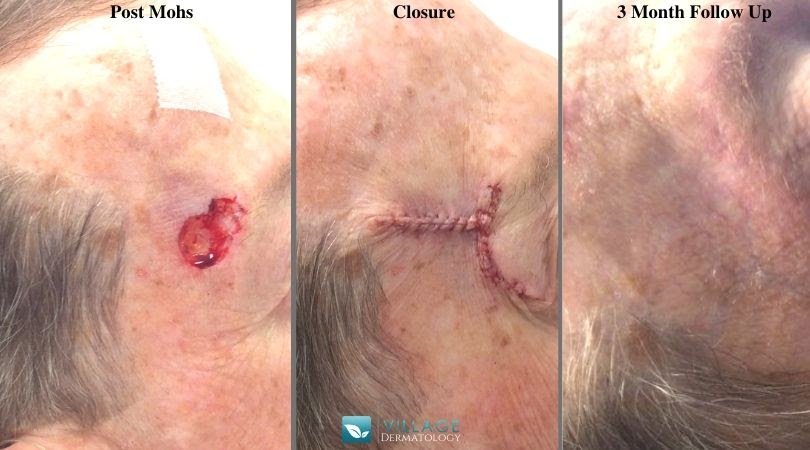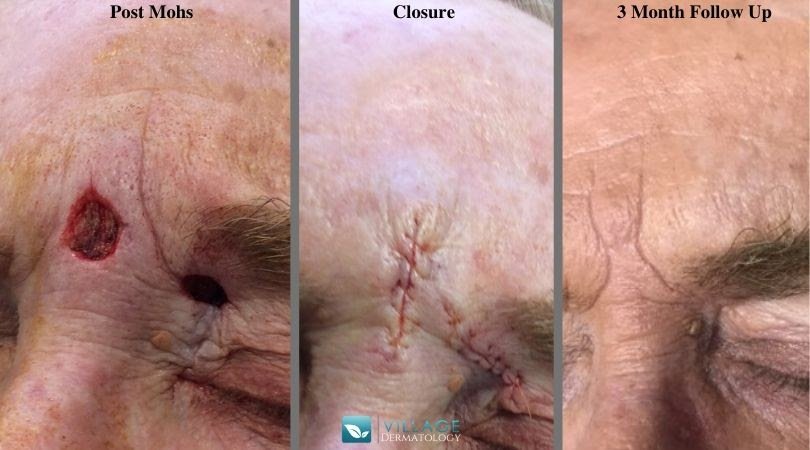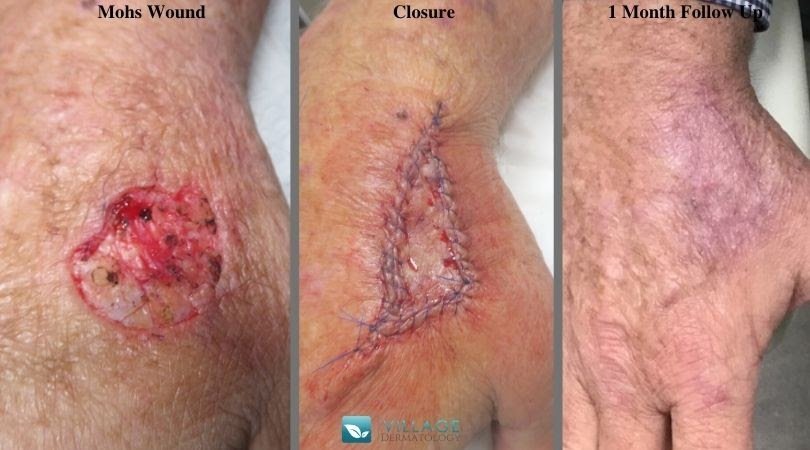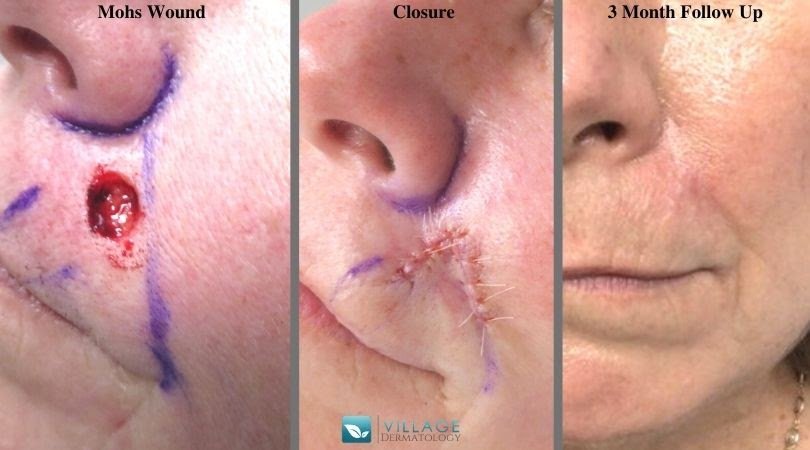Mohs Micrographic Skin Cancer Surgery in Houston
Village Dermatology offers in-office Mohs surgery at our Houston location. Mohs surgery offers the highest cure rate in the treatment of non-melanoma skin cancers. Patients choose Mohs surgery as their treatment options for several reasons:
highest cure rates
lowest recurrence rates
the best cosmetic outcomes
What is Mohs Surgery and How is it Performed?
Mohs surgery is the most advanced method for effectively treating skin cancer. It is the gold standard and has a 99% success rate for safely removing layers of cancerous skin tissue according to Johns Hopkins Medicine.
Mohs surgery is highly technical, which is why Village Dermatology Houston has a dedicated Mohs surgeon for this procedure. The surgeon removes thin layers of skin one layer at a time and examines each layer under a microscope to determine if any cancer remains. This procedure continues until only cancer-free tissue remains.
Named after its pioneer, Dr. Frederick Mohs, Mohs surgery has become the gold standard in the treatment of non-melanoma skin cancers, particularly basal cell carcinoma and squamous cell carcinoma.
Developed in the 1930s by Dr. Mohs, and perfected by dermatologic surgeons, Mohs surgery offers the unique ability to have a skin cancer fully treated, from excision to ensuring clear margins to repairing the skin defect, all in one visit. This is all done in the doctor's office under local anesthesia while the patient is awake and comfortable, avoiding the high cost of facility/hospital fees as well as the cost and risk of general anesthesia.
To learn more about Mohs surgery, we encourage you to come in for a consultation.
Before & After Pictures of Mohs Surgery Patients
Pictures include Mohs wounds, closures and follow ups ranging from 3 months to 1 year.


